Also known as the country’s Adventure Capital, due to the many thrilling, adrenaline-inducing activities on offer, Jinja should be a part of every Uganda Itinerary. Even if white-water rafting on the Nile doesn’t sound like your idea of fun, it’s still worth dropping by to see the impressive Source of the world’s longest river.
Despite its reputation, Jinja isn’t only a place for thrill-seekers, and the rest of the town is actually rather laid-back and full of pretty lodges and great restaurants. Friendly locals and a generally welcoming atmosphere add to the appeal. Read on for everything you need to know about visiting Jinja and the Source of the Nile.
This post may contain affiliate links, and I might earn a small commission at no additional cost to you. For more info, click here.
Where is the Source of the Nile located?
First things first: While Jinja is usually named the source if the White Nile, not everyone agrees with that assessment. This is the place where the river flows out of Lake Victoria, continuing north-west towards Murchison Falls and Lake Albert and eventually to Sudan, where it is joined by the Blue Nile in Khartoum.
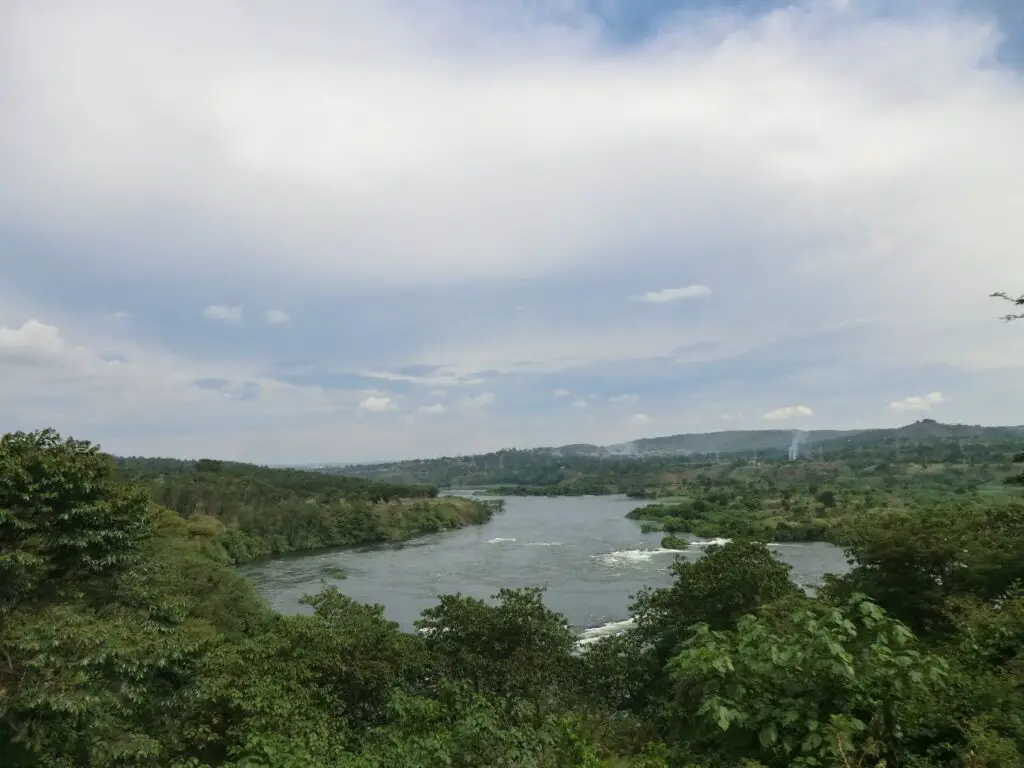
Others consider the Kagera River flowing into Lake Victoria to be the part of the Nile, and the sources of its various tributaries are thought to lie somewhere in the highlands of Rwanda or Burundi. As no definite source of these has been identified as of today, Jinja is agreed to be the location of the source of the Nile by most people.
How to get to the Source of the Nile
Jinja is served by frequent buses and matatus (shared taxis) moving between Kampala and the Kenyan Border or cities in eastern Uganda, like Mbale and Tororo. In Kampala, most of these start at the New Taxi Park or the nearby Kisenyi Bus Terminal.
The easiest way to reach the Source of the Nile from central Jinja is to either walk or to take a boda-boda (motorcycle taxi). If you’re walking, just follow Cliff Road from its intersection with Bridge Street, slightly north of the big Indian Square Roundabout.

To cross the Nile at its source, some locals usually hang around, who’ll take you across in a dugout canoe for a small fee. Otherwise, the nearest place to cross the river is at the railway and pedestrian bridge about 1 km / 0.6 mi. north of the Source of the Nile Gardens.
Guided tours to the Source of the Nile
There are also several guided tours to the Source of the Nile available, like this well-rated 3-hour walking tour, which also stops at several other historically and culturally significant locations. There are also several day trips to Jinja available from Kampala or Entebbe. Have a look below to find your favourite.
Visiting the Source of the Nile
Those expecting a small spring trickling out from some rocks are in for a surprise, as the River already makes a majestic appearance, languidly flowing out of Lake Victoria. There are even some small islets, one of which actually has some tiny huts and a garden plot sitting on them.
You’ll have the best view of the source from the slightly elevated western bank of the river. There’s a small, manicured park called Source of the Nile Gardens with an entrance fee of a few thousand shillings, or you can just continue a little further south and have the almost exact same view for free from a grassy hill.
The gardens contain a marker reputedly erected at the spot where John Henning Speke first glimpsed the source during his discovery expedition.
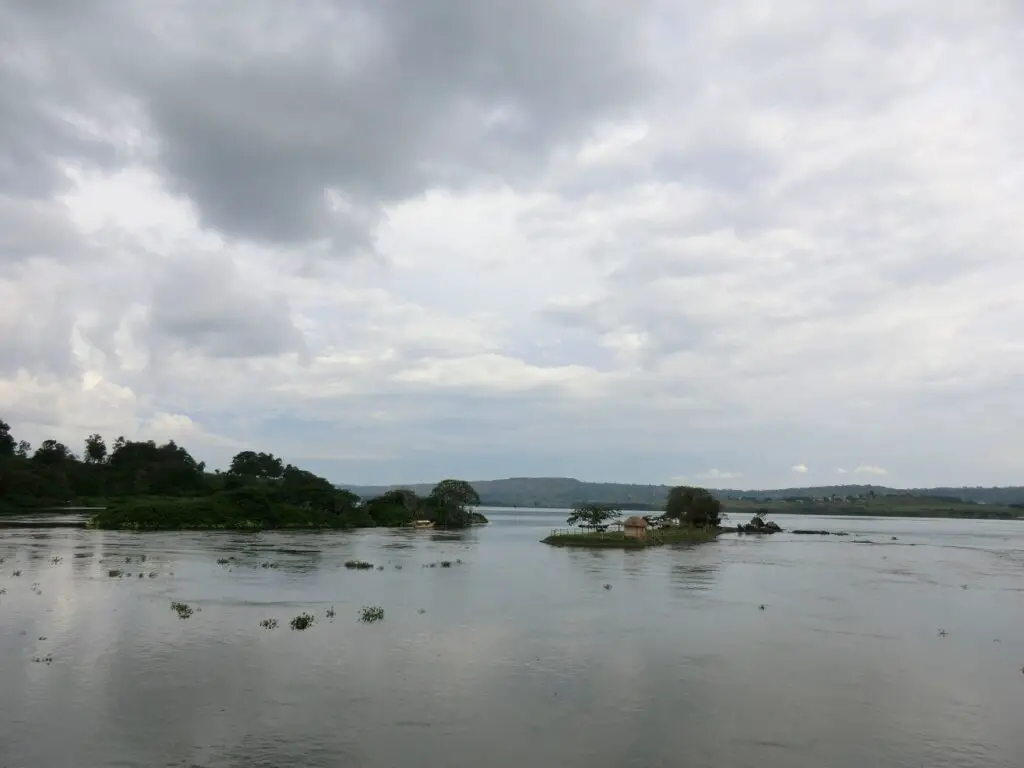
There are usually one or two locals waiting by the shore to ferry visitors across to the other side in small dugout canoes for a few thousand shillings. Just make sure to have a look at the boats beforehand, as ours kept filling up, and we had to frantically scoop out the water while we were being ferried across.
On the eastern shore, you’ll find a small bust of Mahatma Gandhi, whose ashes, were scattered here (as well as in the biggest rivers on all other continents) by his request after he passed away in 1948.
While taking a swim at the source might sound tempting, I’d advise against it, as it’s still slow-flowing enough to make Bilharzia a serious risk (something that apparently isn’t the case in the swifter-flowing waters used for white water rafting further downstream).
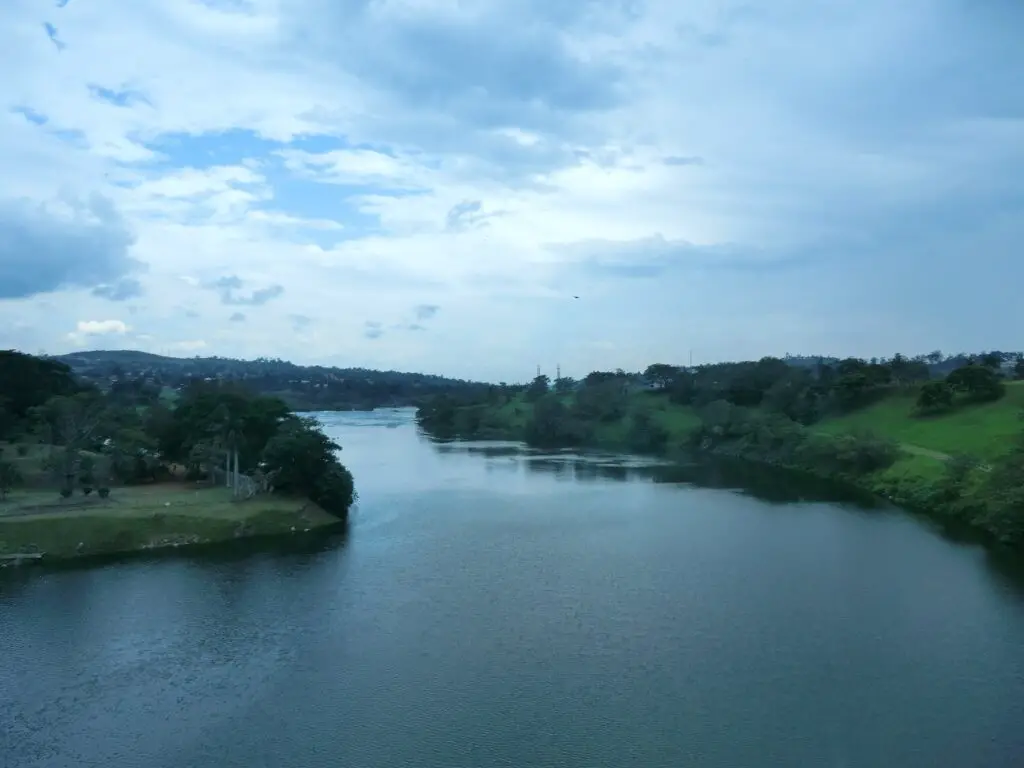
Is there an entrance fee for the Source of the Nile?
There is for the Gardens of the Nile (about 5,000 Shillings), but there are various other spots along the western shore offering great views of the source for free.
The best hotels in Jinja
Jinja has a varied accommodation catering to both backpackers and people looking for a bit of luxury. You could opt to stay in the city centre or a little further afield near the Nile.
We pitched a tent at Explorer’s Campsite, which has a beautiful location near Bujagali Falls (really more a series of rapids) in the Nile. It’s a beautiful scenery to crawl out of your tent to.
The downside is that it’s 8km/5mi. North of central Jinja and when we were there, there were no matatus going after dark, which meant a long walk back (boda-boda’s are not a good idea after dark). Remember: as you’re close to the Equator, dusk arrives around 6PM year-round. Definitely make sure to take a flashlight with you if you plan to return after dark.
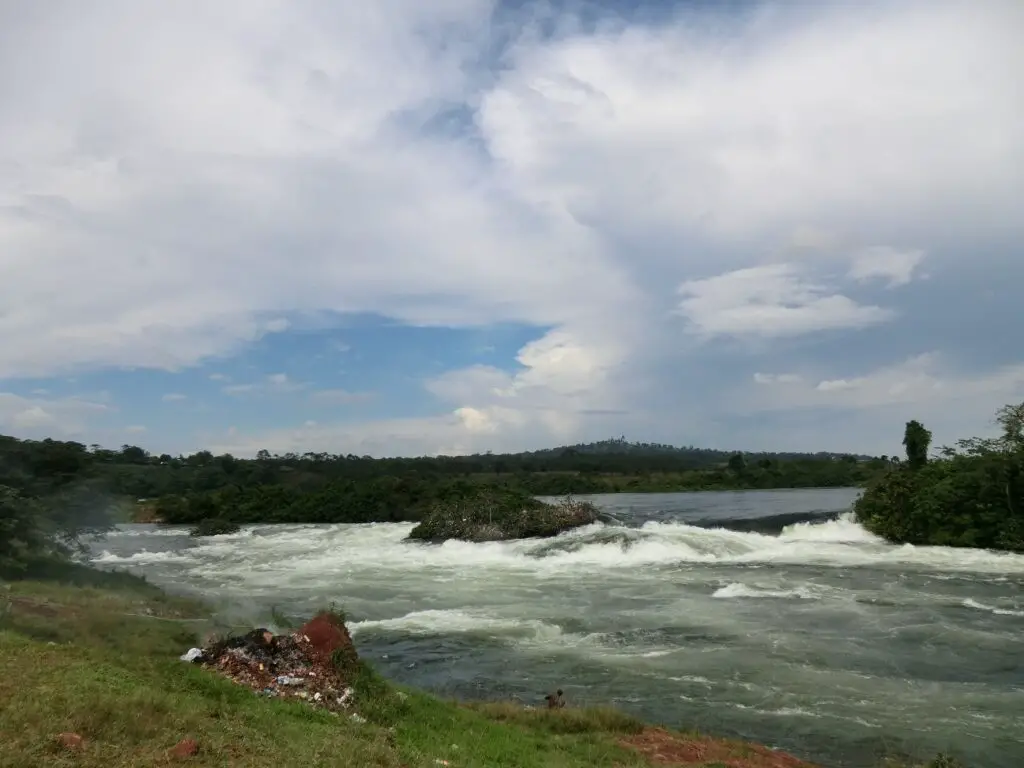
If you prefer to stay more centrally, there are various options available. Jinja Backpackers is the best place for budget-savy travelers, while Buutu Nest is a great mid-range option. The Jinja Nile Resort, on the other hand, is the best luxury resort in town. Have a look at the map for more options.
Where to eat in Jinja
There are plenty of restaurants in Jinja, mostly agglomerating around the source of the Nile and in the city centre. For instance, All Friends Grill Bar and Restaurant on Jackson Ave serves tasty Ugandan and Western food at reasonable prices.
Otherwise, there are the usual street stalls selling skewered meat, rolex and other street foods in the central market at the east end of town.
Map of Jinja and the Nile Source
Have a look at the map to get an idea of the Source’s location and the surrounding area.
Where to go next
Kampala, Uganda’s vibrant capital
Sipi, a beautiful area for hiking, dotted with impressive waterfalls
Tororo, a great off-the-beaten-path destination for Hiking Lovers
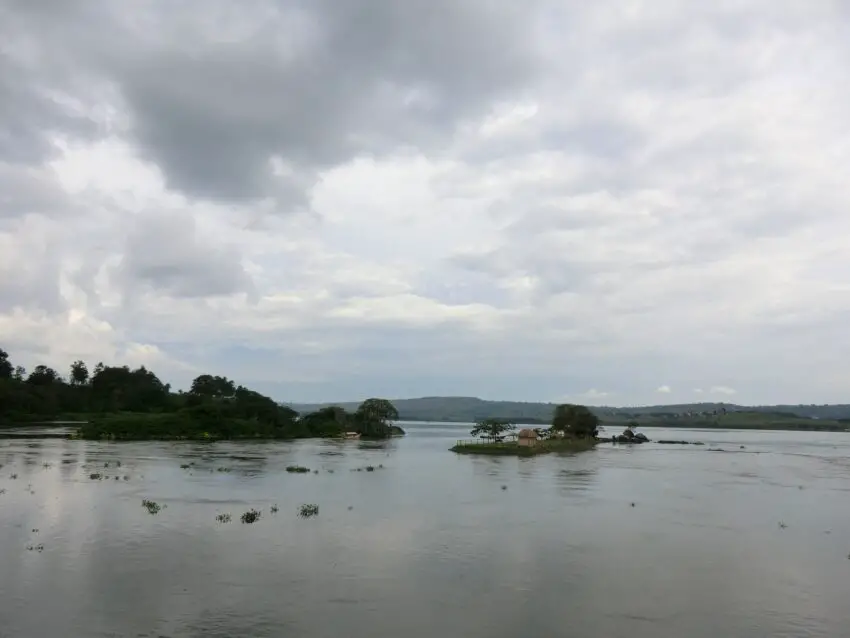
As always, a very useful and well-written article. However, since calling Jinja the source of the Nile in the disclaimer is rather dated – or at potentially misleading, given that the Kagera with its sources is widely agreed to be the actual source of the Nile. Especially since only by using this as a baseline can the Nile keep his (contested) claim against the Amazon as the longest river on earth.
Fun fact: The folks of of a popular british car show whose name shall not be mentioned once (not at all seriously) attempted to find the source of the Nile, too and, after arriving at Lake Victoria, got corrected as well^^ Thus they first suggested a connection between Lake Edward and Lake Kivu, which would’ve placed the source south of Lake Meru, in close proximity to that of the Congo. If true, this would potentially connect both systems similar to the Amazon and the Orinoco and would have been a real scientific sensation. After failing to prove it, they then posited that the mouth of the Nile is not, as widely agreed, at Alexandria, but rather at Gibraltar, and therefore claimed the Mediterranean Sea to actually be part of the Nile, too. From that, they came to the conclusion that the Grumeti (compared to the Kagera, a rather insignificant contributor of Lake Victoria) must in fact be the true source of the Nile and went on to find search for its origin somewhere in the Eastern Serengeti.
Hi Tony, thanks for your comprehensive commentary (very well-researched, as I would have expected of you;-). Of course, you’re absolutely right, and Jinja as the source of the Nile is contested to say the least. However, I still decided to refer to it as such, as this is where the White Nile flows out of Lake Victoria and there’s an abundance of monuments claiming this to be the source. Thus, while the Kagera may be the actual source, as far as I know it’s not agreed upon, which tributary of that river forms the actual starting point of the Nile. At least Jinja is the point from which the River is referred to as the Nile, so I guess this is as official as it gets going by today’s knowledge;-)
Hi Reinhard,
thank you as well for your reply and I can fully understand your viewpoint 🙂 It is indeed true that the outstream of Lake Victoria is the first part that is referred to as Nile. Yet some would debate that the name White Nile itself refers to only a rather short part in the Sudan and that the parts upstream are the Albert-Nile, Kyoga-Nile and Victoria-Nile, respectively. With the exact source of the Kagera and thus the Nile as a while not quite being confirmed yet.
Which is, even with the current level of technology, still the case for most of the biggest and longest rivers on earth, especially the Amazon, the Mekong, the Yangtse, the Congo and the Brahmaputra – fuelling the debate in the first place.
It also doesn’t help that each of them adopts many different names during its long journey and the most commonly known one often being used for a much shorter part of the river – case in point being Victoria Nile as another name for the stream leaving Lake Victoria and being renamed Albert Nile after having left Lake Albert. While Nile on its own is mostly being used only after merging with the Blue Nile from Ethopia (and, in historc times, with the Yellow Nile from the Chad), i.e. in the sphere of influence of ancient Egypt.
Long story short, trying to locate the true source and coming to a comprehensive conclusion would be an adventure of its very own – one for each of the streams mentioned above. Or, to quote the guys refered to in the previous post: “Let’s do science […]” =D
Until then, most would indeed accept Lake Victoria as the factual source of the Nile – even though this would establish the Amazon as longest river on earth. An outcome I could easily live with, as I, personally, favour the Amazon anyway^^
Hey Tony,
it’s true that there’s a certain disagreement about the terminology of the various sections of the river, in addition to the confusion surrounding the smaller tributaries. I guess we have to accept that we know a lot less about some of the natural wonders of the world than is usually hinted at. Trying to follow a few of the smaller tributaries to their source certainly would be quite an adventure (as well as a giant challenge, I’d venture to guess:).